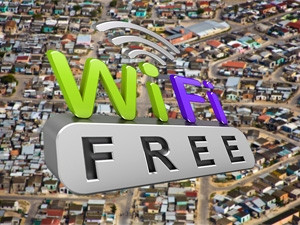
As the South African National Taxi Council (Santaco) prepares to outline the progress of its WiFi initiative so far, its technology partner Wi-Taxi has described commuter uptake as positive, with its capacity set to expand in the coming months.
According to Brian Mdluli, CEO of Wi-Taxi, Santaco will reveal uptake statistics as part of government's "transport month" in October. Although specific figures cannot yet be divulged, he says "uptake from the commuters has been phenomenal and we are seeing increased usage not only in data, but also in the number of users per car".
The service was launched in June, starting with a targeted 1 500 vehicles to be enabled over a six-month period, while the second phase would connect around 4 000 taxis each month. Users are restricted to a 50MB monthly data cap and the service draws advertisers targeting commuters. Santaco previously focused on taxi-rank-based advertising, including billboards and smaller outdoor models.
Mdluli says around 1TB of data is used collectively by the connected vehicles each month, and Wi-Taxi also wants to establish itself as a go-to channel for commuters who want to use their mobile devices to buy airtime and take advantage of SA's growing e-commerce sector. Local e-tailers recently indicated greater focus on tapping into growing smartphone penetration across the country.
Time will tell
Adrian Schofield, ICT veteran, notes the 50MB limit makes sense as Santaco will get an initial sense of the scale of use before going ahead with any further development. "It would still need some sort of research so they can see proper patterns of use, but the project plays into the long-standing belief that we need to reduce the costs of communicating."
Schofield says the project has a lot of potential and could yet lead to innovations in the way commuters interact with Santaco in the long-run. Although the minibus industry has a heavy emphasis on cash payments, says Schofield, a strong uptake in smartphone penetration, coupled with more commuters using the service, could lead to innovations in payment channels.
Although it may be a long way off, Schofield says the connectivity "becomes an opportunity for people to use the devices to pay for their taxi ride, similar to Uber".
Share